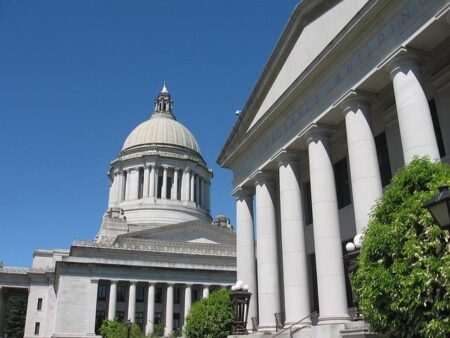Could the Department of Education Be Eliminated? An In-Depth Analysis of Legal, Political, and Educational Implications
Understanding Presidential Influence Over Federal Agencies
The scope of presidential power regarding federal agencies is intricate, involving a blend of legal boundaries and political realities.Although the President can shape policy directions and propose budgets for executive departments,the authority to completely dismantle an agency like the Department of Education is far from unilateral.The U.S.Constitution grants Congress the exclusive “power of the purse,” meaning that defunding or abolishing a federal agency requires legislative consent rather than a simple executive directive.
Critical factors to consider include:
- Legislative Foundation: The Department of Education was established through congressional legislation, which also governs its funding and operational scope.
- Budgetary Control: While the President submits budget proposals,congressional committees hold the final say on appropriations.
- Judicial Precedents: Presidents have historically reorganized or downsized agencies via executive orders, but outright elimination is rare and often contested in courts.
- Political Consequences: Moves to dismantle major federal bodies typically provoke meaningful political resistance and legal disputes.
| Entity | Responsibilities | Constraints |
|---|---|---|
| President | Sets policy agenda, proposes budgets | Cannot unilaterally abolish agencies |
| Congress | Appropriates funds, creates or dissolves agencies | Requires majority approval for legislation |
| Judiciary | Reviews constitutionality of actions | Can block unlawful executive or legislative acts |
Legal and Political Obstacles to Eliminating the Department of Education
The prospect of shutting down the Department of Education is fraught with substantial legal barriers. Established by congressional statute,the department’s existence and funding are protected by laws such as the Higher Education Act and the Elementary and Secondary Education Act. These statutes embed federal education programs deeply into the nation’s legal framework, making any abrupt closure both legally challenging and operationally disruptive.
Politically, the department’s dissolution would face formidable resistance. It administers over $70 billion annually in federal education funding, supporting millions of students, schools, and states. This creates a broad coalition of stakeholders—including legislators, educators, and advocacy organizations—who are invested in maintaining the department’s functions. Key political challenges include:
- Congressional Control: Lawmakers are hesitant to relinquish their influence over education policy, a highly contentious and partisan arena.
- Public Sentiment: A majority of Americans view federal involvement in education as essential, opposing drastic cuts or elimination.
- State Reliance: Many states depend heavily on federal funds for education,and sudden withdrawal could trigger severe budget shortfalls.
| Type of Barrier | Primary Challenge | Consequences |
|---|---|---|
| Legal | Judicial review of executive overreach | Litigation delays, injunctions, possible nullification |
| Political | Loss of bipartisan support in Congress | Inability to pass necessary legislation |
| Social | Public protests and opposition | Negative political repercussions and electoral risks |
Consequences for Students and Educational Initiatives
The closure of the Department of Education would have profound effects on students across the United States. Federal financial aid programs, such as Pell Grants and subsidized student loans, could face interruptions, jeopardizing access to higher education for millions.This disruption would disproportionately impact economically disadvantaged and minority students, perhaps exacerbating existing educational disparities.
Beyond financial aid, numerous federally supported educational programs could suffer.The absence of centralized oversight might lead to uneven standards and resource allocation across states, affecting the quality and availability of education. Programs at risk include:
- Title I grants aimed at supporting underprivileged schools
- Federal accountability systems monitoring school performance
- Special education services mandated by federal law
| Program | Likely Impact |
|---|---|
| Pell Grants | Potential disruption in aid distribution |
| Title I Funding | Decreased support for economically disadvantaged schools |
| Special Education | Uncertainty in delivery of mandated services |
Expert Perspectives on Alternatives and the Road Ahead
Policy experts concur that while the President can steer the Department of Education’s focus, completely shutting it down is legally and politically improbable. The department’s protection under federal law and congressional oversight creates a robust shield against unilateral executive action. Achieving dissolution would necessitate comprehensive legislation, requiring bipartisan consensus that is currently elusive in today’s polarized political environment.
Several reform options are being debated as more feasible alternatives:
- Agency Overhaul: Simplifying the department’s structure to reduce federal involvement and empower state education systems.
- Funding Shifts: Redirecting resources toward school choice programs and scholarships to increase educational options.
- Decentralization: Transferring significant regulatory authority to local and state education agencies.
| Policy Option | Expected Outcome | Political Viability |
|---|---|---|
| Complete Elimination | Ends federal education oversight | Low |
| Restructuring | Streamlines bureaucracy,enhances flexibility | Moderate |
| Devolution | Increases state and local control | High |
Conclusion: Navigating the Future of Federal Education Governance
The ongoing discourse surrounding the Department of Education’s future highlights the complex interplay between executive authority,legislative power,and public interest. Even though the prospect of a presidential shutdown remains remote due to entrenched legal and political safeguards, the debate underscores broader ideological divides over the federal government’s role in education. As policymakers, educators, and communities continue to engage with these issues, the evolution of federal education policy will remain a critical area to watch in the coming years.




